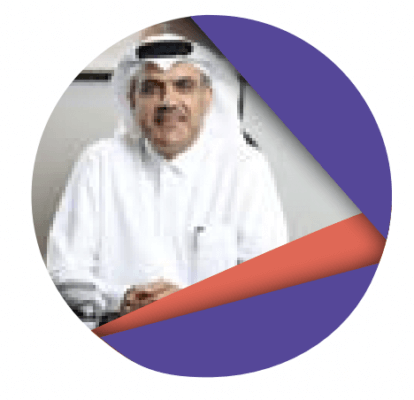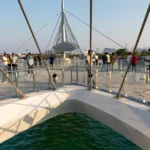Eng. Nasser Al Ansari
Chairman
Just Real Estate
While the COVID-19 pandemic and a slew of new properties coming onto the market has slowed investor returns on rental income as supply outstripped demand– making the market tenant friendly, the tide seems set to turn. One of the trends that we are predicting is a positive medium-to-long outlook for Qatar’s residential and industrial real estate, as the country heads towards a forecasted economic recovery, the countdown to its hosting of the FIFA World Cup 2022 draws near, economic diversification gathers pace, government incentives begin to take hold and mature investment vehicles such as REITs appear on the horizon.
Servicing an expanding population
While an influx of new property development is largely associated with the country’s scheduled hosting of the 2022 FIFA World Cup in November and December next year, it is key to delivery of Qatar’s National Vision 2030 which is being driven by focused economic diversification. As Qatar moves to grow its manufacturing, logistics, knowledge, events, and tourism industries, it can look forward to an influx of both white collar and blue collar workers. These newcomers will all need accommodation, leisure, service, and entertainment opportunities. Developments, such as the new sustainable urban Lusail City destination with its Lusail Seef waterfront project are among the solutions provided and are attracting interest from buyers and investors alike. And, with Qatar opening its property market to foreigners and rewarding investors with permanent residency, the residential market will likely move from a rental-based, to a sales-based economy. The multi-use Lusail Seef has attracted interest from both Qatari and foreign investors, who are attracted by its entertainment, retail, food and beverage options, the Marina Promenade, and the Parisian themed Place Vendome. The project offers freehold ownership for luxurious residential apartments and leasing opportunities for community retail outlets, in addition to residency for non-Qatari investors in line with Cabinet Resolution No 28 of 2020. Lusail will provide homes and investment properties for increasing numbers of tourists which will be attracted to Qatar while residents will be prepared to move outside the centre of Doha due to the advanced transport connectivity of the new city. Lusail itself is ripe for investment by local and foreign investors as it will be the centre of business and commerce in the future therefore holding out prospects for attractive returns on investment.
Industrial sector growth
The growth of the manufacturing and logistics sectors will also spur demand for industrial real estate which is quite encouraging. Demand for warehousing facilities from the manufacturing and logistics sector is growing and Qatar’s free zone and industrial zone propositions is picking up speed. At the same time, Qatar’s digital transformation agenda is spurring the growth of e-commerce and tech- companies.
Foreign Direct Investment will be a sector driver as foreign investors can import funds to finance the set-up, operation, or expansion of projects and they are being attracted by incentives and land and property options offered by Manateq as Qatar moves to position itself as a regional logistics hub spurring demand for offices and warehouses. Qatar’s logistics ambitions have been given a major boost by the Qatar Government investment of US $8.2 billion in the Logistics Area project – one of the largest developments undertaken in the country – which is close to Hamad Port, Mesaieed Industrial Port, and the Orbital highway.
Alongside this, the ports authority is strengthening the country’s logistics proposition by planning to convert available areas into additional container storage areas to cater to anticipated demand and investing heavily in the development of ports and logistic areas while acquiring additional lands on which to build special economic zones in the south of the country. We can envisage the non-residential sector to emerge as the biggest revenue generator in the medium-to-long term.
Positivity
Market sentiment is improving as regional ties normalize following the lifting of the GCC blockade, the fast pace of the country’s COVID-19 vaccine program and the country celebrating winning the bid to host the continental multi-sport Asian Games in 2030. The positive sentiment has been demonstrated by optimistic World Bank forecasts for the Qatar economy, bullish trading on the Qatar Stock Exchange, a rise in LNG prices and Qatar’s planned expansion of LNG exports.
Up to March 31, 2021, all of the companies listed on the Qatar Stock Exchange reported a combined jump in profits by 30.74 percent to QR 8.36 billion for the same period the previous year.
The World Bank has forecast economic growth of 4.1 percent for Qatar next year (2022) rising to 4.5 percent in 2023 – the highest projected growth in the GCC.
An enlarged Masraf Al Rayan bank has been created by its merger with Al Khaliji for a new, bigger entity ready to positively contribute to the economy by supporting corporate business and the SME sector which is progressing as a strategic partner for the public sector.
Qatar’s economy is benefiting from rising LNG prices and the Government has announced plans to expand its LNG operations with future national exports expected to equal those of Iraq and Kuwait combined. There’s a positive vibe in the air, and there’s a sense of confidence that post-COVID, the country will rebound quickly reaping the benefits of new legislation and regulation which is incentivizing and maturing the market. The sentiment has been buoyed by World Bank forecasts that Qatar’s real GDP growth this year will be 3 percent rising to 4.1 percent in 2022 with the influx of non-oil receipts from the FIFA World Cup which looks like being the world’s first post-Covid mass audience sporting event.
Commercial Sector Challenges
The challenge in the country’s real estate landscape will be the commercial sector which could feel the impact of a global workplace evolution with remote or hybrid operations tipped to become the norm post-COVID. What actually transpires remains to be seen although the ability to work in more flexible formats will be a recruitment winner. The less office-based staff needed, the less floor space required, and this will impact commercial demand.
The upside is that there is likely also to be increased demand for serviced, shared work environments, particularly from the growing entrepreneur and start-up segments, while the logistics sector will deliver office demand in the new zones dedicated to the industry.
This article was published as part of the sixth edition of Property Finder Qatar’s Trends Report
You can also search for:
serviced apartments in doha
hotel apartments doha long term






